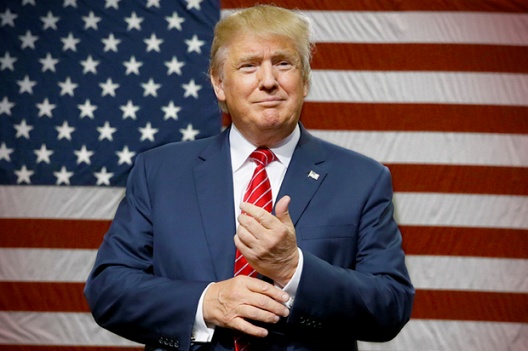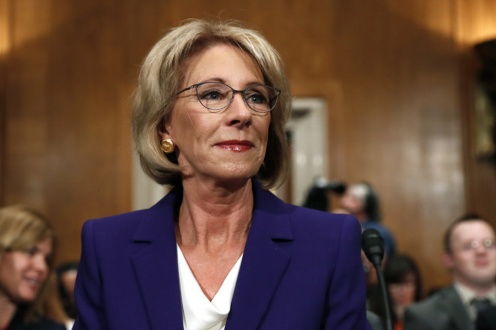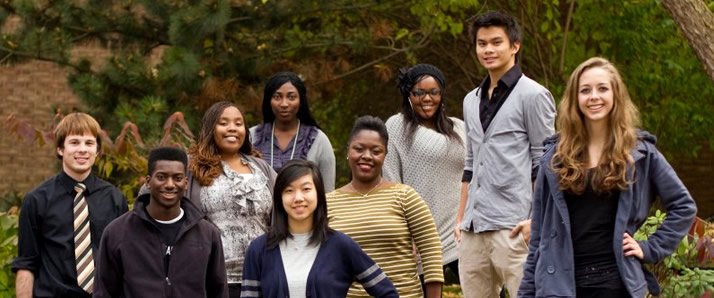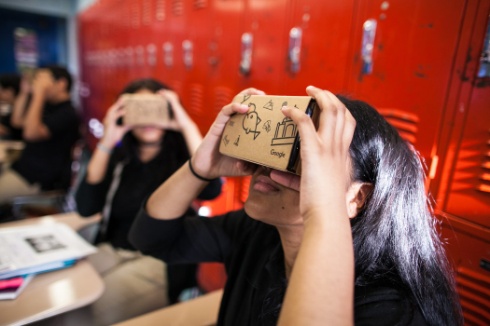美國教育的持續演變
教好你的孩子
很少有人會質疑良好的教育是至關重要的,不僅對接受教育的個人而言,而且對社會、國家和國際社會的進步也至關重要。雖然也許不是真正的要求或絕對必要,但充分的教育確實使一個人能夠應對和理解日常生活中遇到的挑戰和複雜性。
與醫療保健一樣,美國固有的例外論常常導致許多愛國者假設並斷言美國的教育體係是世界上最好的。然而,統計數據並不能證實這一點。 「根據經濟學人智庫制定的《學習曲線》報告,美國在整體教育表現排名的 40 個國家中排名第 17 位。芬蘭排名第一。
兩大主要政黨之間激烈的政治積怨,讓美國教育未來的走向變得撲朔迷離。民主黨人贊成保留目前由聯邦政府資助和指導的教育結構,而共和黨議員則越來越多地宣揚美國學校系統私有化的好處和可取性。關於這個主題的激烈爭論仍在繼續,新總統和共和黨主導的政府對美國教育的影響仍有待觀察。
政府認真參與教育始於 1867 年,當時教育部成立,負責全面收集有關教學和學校的信息,以確定哪種方法對教育民眾最有效。然後,這些資訊將提供給政策制定者,他們將決定美國教育的發展方向。
第二次世界大戰後,聯邦政府大大擴大了在教育方面的作用。 「1944 年,《退伍軍人權利法案》授權提供高等教育援助,最終將近 800 萬名二戰退伍軍人送入大學。」2
冷戰激發了 1958 年《國防教育法案》(NDEA) 的製定,以促進科學和技術領域的教育,以便美國能夠在這些領域更好地與新興的蘇聯競爭。民權法案和隨後的啟發性法律在 60 年代和 70 年代繼續存在,旨在為該國貧困地區的窮人和弱勢群體提供優質教育。
1980年,教育部成為內閣梯隊機構,持續影響全國教育。 「該部門的中小學計畫每年為近 18,200 個學區和超過 5,000 萬名學生提供服務,就讀於約 98,000 所公立學校和 32,000 所私立學校。該部門的計畫也為超過 1,200 萬名專上學生提供助學金、貸款和勤工助學援助。
儘管聯準會在教育領域發揮重要作用,但各州和地方政府對教育的影響也很大。私人和慈善組織也是如此。到目前為止,學校的大部分資金並非來自聯邦政府。

川普總統任期對教育的影響
許多人預計,在最近當選的川普總統的領導下,美國的公共教育將會發生巨大變化。總統在理念上與共和黨許多人保持一致,堅信家長在公立教育和私立教育方面的選擇。
2016 年9 月,時任總統候選人川普表示,「他的第一份預算將重新分配$200 億聯邦資金,用於設立一項州政府整筆撥款,他表示希望這筆撥款能夠幫助表現不佳的公立學校的貧困兒童入讀特許學校和公立學校」。私立學校。」4 川普總統表示的意圖是為美國弱勢學生提供學校選擇。
目前,「國家目前在第一章上花費了大約$150 億美元,這是一項旨在為貧困兒童提供教育的聯邦計劃。」5 川普總統並未將他提出的$20B 聯邦資助提案與第一章具體掛鉤,這導致許多分析師認為,資金可能會用於代金券計劃。私有化熱衷者希望川普政府減少教育部對美國課堂的參與。有些人認為川普總統確實可能取消或大幅削減教育部。

川普總統對教育部長的有爭議的選擇——貝齊·德沃斯
在民主黨的強烈抵制下,川普總統任命貝齊·德沃斯為教育部長的人選於2017 年2 月7 日得到確認。排名破位,副總統邁克·彭斯以決定性的一票投給了德沃斯。國務卿德沃斯「儘管幾十年來一直在倡導學校學券計劃和學校私有化,但她之前沒有任何教育工作經驗。」6
德沃斯和她的丈夫多年來一直是學校私有化的堅定支持者。眾所周知,她支持家長的“教育選擇”,包括私立學校、數位教室和家庭教育,作為傳統公共教育的可行選擇。 2016年,她向《底特律新聞》表達了一種信念,即應該放棄公立學校,轉而採用自由市場體系。
德沃斯國務卿和川普總統青睞的代金券計畫並非沒有批評者,他們擔心這種做法可能會導致不平等現象加劇,讓人回想起學校種族隔離的時代。 「包括川普在內的學券和擇校支持者將其視為教育私有化並將其轉變為自由市場體系的工具。 (根據《紐約時報》報道,經濟學家認為這不是一個好主意。」7
德沃斯部長和川普總統對美國公共教育未來的影響仍有待觀察,但很難想像現狀會不受影響。

美國學校人口結構的變化
美國的人口組成正在發生變化,這已不是什麼秘密。 「公立 K-12 教室中拉丁裔、非裔美國人和亞洲學生的總人數首次超過了非西班牙裔白人的人數。」8 許多人認為美國的多樣性是這些學生學習的一個優勢。教育。加州等州制定了學生公平計劃,為貧困地區的學生提供平等的機會。
儘管許多美國人對國家不斷擴大的人口結構抱持包容性的傾向,但某些經濟現實不容忽視,並成為許多不滿非法移民子女教育巨額成本的人爭論的根源。美國移民改革聯合會 (FAIR) 表示,「一份新報告顯示,本學年,數以千計最近進入美國的非法移民兒童的教育成本高達 $7.61 億——一些學校系統推動聯邦政府來付賬。 」9
除了教育之外,在應對不斷變化的人口結構時所面臨的挑戰方面,人們的情緒高漲,政治分歧也不斷存在。與教育和政治努力的所有領域一樣,美國人對新政府將如何應對這些挑戰以及他們將做出的決定面臨觀望的局面。
美國教育的新趨勢
體制改革與市場化教育
預計新政府將繼續推動低收入學生的學券制度,並積極倡導擇校。總統的新任命者表現出對基於市場的學校經費的明確支持。除了教育部長貝齊·德沃斯 (Betsy DeVos) 對特許學校的熱愛之外,副總統彭斯也在他的家鄉印第安納州推行了一項代金券計劃。我們可以合理地預期學校改革措施將在不久的將來更容易實施,包括學券計劃和放寬特許學校限制。
多語言教育
隨著國家人口組成的變化,多語言教育將會持續下去。最近的研究表明,儘管人們普遍持有這樣的看法,但雙語教育並不妨礙英語學習,從長遠來看甚至可以提高學業成功。 「對雙語的廣泛認知益處以及日益全球化的經濟的研究促使許多州實施了包括以英語為母語的雙語計劃。展望未來,限制可能不是來自聯邦法規,而是來自合格教師的短缺。
學生入學率下降
學生入學率的持續下降繼續影響著全國各地的校園。隨著學費不斷上漲,個人化將成為吸引潛在學生並留住他們的手段。 “EdSurge 新聞 將個別化學習定義為「科技輔助的差異化教學」。個人化是 2017 年將持續的趨勢,特別是隨著學院和大學尋找方法來容納越來越多需要更大靈活性的非傳統學生。
針對性的微學習
與個人化相關,微學習可以少量或在有特定需求時提供內容給學生。這種類型的教育交付通常透過各種行動平台、應用程式等來完成。例如,人們可能不會完整地學習某一特定講座,而是以易於消化的較短片段來學習,這些片段更容易消化和保留。
高速教育
高速學習是「一種學習形式,研究表明,比在擁擠的演講廳或教室裡長達數小時的獨白更快、更有效、更持久。」12 學生透過實踐和解決問題來學習。行動裝置、應用程式和筆記型電腦上的真實模擬可以實現即時、快速的學習,反映當今快速變化的世界。許多人認為,透過融入高速教育方法,學術界將更好地為學生服務。

虛擬實境-不再有鉛筆,不再有書籍
虛擬實境作為一種學習工具正在學術界引起極大的關注。它的潛力「幾乎」是無限的。不再局限於印刷頁面或二維視訊螢幕,今天的學生可以真正讓自己置身於他們想要了解的人物、地點和事物的虛擬模擬之中。目前,由於成本高昂且缺乏必要的設備,虛擬實境尚未在課堂上廣泛使用。谷歌紙板等概念正在降低這些成本,並使虛擬實境更易於操作和存取。在未來的幾個月和幾年裡,它的實施肯定會增加。
教師工會受到攻擊
近年來,共和黨立法者在顛覆美國許多地區教師的集體談判權方面取得了巨大成功,其中包括中西部的傳統勞工堡壘。 「事實證明,反對者對教師工會尤其具有挑戰性,教師工會不得不在取消終身教職、部分基於學生考試成績的教師評估以及特許學校擴張等問題上做出讓步——這些政策他們歷來反對,但他們的民主黨盟友總統巴拉克·歐巴馬和前教育部長阿恩·鄧肯…對此表示歡迎。
綜上所述
預計 2017 年美國與特許學校相關的擔憂將會加劇。他們將與教育部長貝齊·德沃斯 (Betsy DeVos) 一起,繼續促進特許學校的擴張。 「許多保守派將公共教育視為政府壟斷,並意圖透過競爭(特別是與私人特許學校的競爭)使傳統公立學校破產。這是他們的機會。美國特許學校是否會歡迎總統的學校私有化計劃,還是最終會拒絕這些計劃,還有待觀察。
對教育和美國生活各個方面的政治影響是立竿見影的,並將在可預見的未來產生深遠的影響。在如此動盪和快速變化的政治格局中,水晶球是模糊的,很難做出準確的預測。在許多學術領域,無論是技術上或哲學上,都有著巨大的希望。希望能夠拋開敵意和偏見,以長期改善美國社會的教育需求。
SIS 國際研究在教育測驗、分析和情報的各個方面擁有豐富的經驗。請利用提供的連結查看我們最近開展的與教育相關的研究項目的眾多範例: http://www.sismarketresearch.com/education-elearning/
[/fusion_text][fusion_separator style_type=”none” hide_on_mobile=”小可見度、中可見度、大可見度” class=”” id=”” sep_color=”” top_margin=”15px” Bottom_margin=”15px" _iconpx” =”” icon_circle=”” icon_circle_color=”” width=””align=”center” /][fusion_text]
本文檔的編寫使用了以下資源:
-
https://rankingamerica.wordpress.com/2013/01/25/the-u-s-ranks-17th-in-educational-performance/
-
https://www2.ed.gov/about/overview/fed/role.html
-
https://www2.ed.gov/about/overview/fed/role.html
-
https://www.washingtonpost.com/news/post-politics/wp/2016/09/08/trump-pitches-20-billion-education-plan-at-ohio-charter-school-that-received-poor-marks-from-state/?utm_term=.385cbe113eed
-
https://www.washingtonpost.com/news/education/wp/2016/11/10/what-a-trump-presidency-means-for-americas-public-schools/?utm_term=.6f477309b28b
-
www.cosmopolitan.com/…/betsy-devos-trump-administration-education-…
-
www.cosmopolitan.com/…/betsy-devos-trump-administration-education-…
-
http://www.huffingtonpost.com/brad-c-phillips/top-10-education-trends-t_b_6345056.html
-
http://www.foxnews.com/politics/2014/09/02/cost-educating-new-class-illegal-immigrant-minors-estimated-at-over-760m.html
-
http://www.gettingsmart.com/2017/01/higher-education-learning-trends-in-2017/
-
http://www.gettingsmart.com/2017/01/higher-education-learning-trends-in-2017/
我們提供全面的研究服務和資訊策略分析。我們為許多世界上最大和最有影響力的教育組織提供服務。我們公司進行市場研究、策略研究和競爭情報。
借助我們的綜合研究和情報,我們的客戶可以從全面的決策洞察中獲得優勢。 40 多年來,SIS 國際研究在 120 多個國家開展了研究項目,並不斷擴大其覆蓋範圍。






